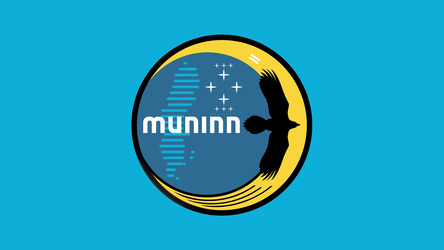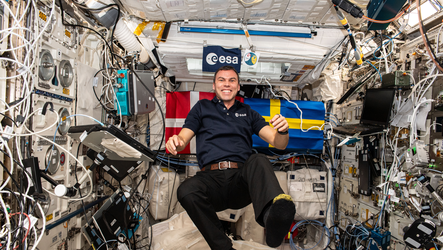Accept all cookies Accept only essential cookies See our Cookie Notice

About ESA
The European Space Agency (ESA) is Europe’s gateway to space. Its mission is to shape the development of Europe’s space capability and ensure that investment in space continues to deliver benefits to the citizens of Europe and the world.
Highlights
ESA - United space in Europe
This is ESA ESA facts Member States & Cooperating States Funding Director General Top management For Member State Delegations European vision European Space Policy ESA & EU Space Councils Responsibility & Sustainability Annual Report Calendar of meetings Corporate newsEstablishments & sites
ESA Headquarters ESA ESTEC ESA ESOC ESA ESRIN ESA EAC ESA ESAC Europe's Spaceport ESA ESEC ESA ECSAT Brussels Office Washington OfficeWorking with ESA
Business with ESA ESA Commercialisation Gateway Law at ESA Careers Cyber resilience at ESA IT at ESA Newsroom Partnerships Merchandising Licence Education Open Space Innovation Platform Integrity and Reporting Administrative Tribunal Health and SafetyMore about ESA
History ESA Historical Archives Exhibitions Publications Art & Culture ESA Merchandise Kids Diversity ESA Brand Centre ESA ChampionsLatest
Space in Member States
Find out more about space activities in our 23 Member States, and understand how ESA works together with their national agencies, institutions and organisations.
Science & Exploration
Exploring our Solar System and unlocking the secrets of the Universe
Go to topicAstronauts
Missions
Juice Euclid Webb Solar Orbiter BepiColombo Gaia ExoMars Cheops Exoplanet missions More missionsActivities
International Space Station Orion service module Gateway Concordia Caves & Pangaea BenefitsLatest
Space Safety
Protecting life and infrastructure on Earth and in orbit
Go to topicAsteroids
Asteroids and Planetary Defence Asteroid danger explained Flyeye telescope: asteroid detection Hera mission: asteroid deflection Near-Earth Object Coordination CentreSpace junk
About space debris Space debris by the numbers Space Environment Report In space refuelling, refurbishing and removingSafety from space
Clean Space ecodesign Zero Debris Technologies Space for Earth Supporting Sustainable DevelopmentLatest
Applications
Using space to benefit citizens and meet future challenges on Earth
Go to topicObserving the Earth
Observing the Earth Future EO Copernicus Meteorology Space for our climate Satellite missionsCommercialisation
ESA Commercialisation Gateway Open Space Innovation Platform Business Incubation ESA Space SolutionsLatest
Enabling & Support
Making space accessible and developing the technologies for the future
Go to topicBuilding missions
Space Engineering and Technology Test centre Laboratories Concurrent Design Facility Preparing for the future Shaping the Future Discovery and Preparation Advanced Concepts TeamSpace transportation
Space Transportation Ariane Vega Space Rider Future space transportation Boost! Europe's Spaceport Launches from Europe's Spaceport from 2012
A patch for the stars
Thank you for liking
You have already liked this page, you can only like it once!
Patches are an integral part of every astronaut mission. Space agencies print out a cloth reproduction that astronauts wear during their flight, a tradition that started sixty years ago.
ESA project astronaut Marcus Wandt from Sweden will travel to the International Space Station on Axiom Mission 3 (Ax-3) no earlier than January 2024.
He is wearing six patches in this picture with his Axiom Space flightsuit: his Muninn and Axiom-3 mission patches, emblems from the European Space Agency and Axiom Space, as well as from the Royal Swedish Air Force and the Swedish flag.
Mission patches for astronaut missions tend to be a blend of the space travellers’ personality, the mission goals, and the creativity of an artist. The name and symbolism behind Marcus’s mission were a good starting point for inspiration.
His mission is called Muninn, a name coming from Norse mythology and one of the two raven accomplices of the god Odin – Huginn and Muninn. According to the myth, the two ravens serve as messengers and advisors to their god, sharing all they see and hear.
ESA graphic designer Karen Lochtenberg worked together with Marcus and started with the basics – preferred colours, patches he liked, symbols for the mission and something personal. After a few sketches and iterations, the design had a clear direction.
The Muninn patch on his right arm shows the raven gliding around Earth to share the knowledge collected during Marcus’s mission. The dark blue circle represents Earth and includes lines depicting Marcus’s homeland, Sweden. The patch displays the two colours of the Swedish flag – blue and yellow – with two white stripes next to Muninn’s upper wing refer to the distinctive solar arrays of the International Space Station.
The constellation resembles a Viking symbol for protection. The lines from Muninn’s lower wing are a reference to supersonic shock waves from jets. Marcus is a test pilot for the Swedish Air Force.
The Ax-3 patch on his chest is shaped as a shield to illustrate strength and courage. The International Space Station is centred and angled to be seen as aviator wings, symbolising four ‘pilot’ astronauts flying to low Earth orbit with the spirit of exploration and collaboration.
The number 500 in the Ax-3 crew patch represents a jubilee year for Sweden as the country celebrated five centuries as an independent nation on 6 June 2023. The number 100 denotes centennial milestones for Türkiye and Italy.
The mission’s motto, ‘Further, beyond’, is written in Latin (PLVS VLTRA) around the bottom edge of the patch. The names of each crew member are seen in alphabetical order with flags of the countries they represent: Türkiye, Spain, USA, Italy and Sweden.
Find more about the story behind the Muninn patch on ESA’s Exploration blog, and follow Marcus’s space journey on X and Instagram.
-
CREDIT
Axiom Space -
LICENCE
ESA Standard Licence

Muninn mission name and patch explained

ESA project astronaut Marcus Wandt in ESA’s Columbus…

ESA project astronaut Marcus Wandt in ESA’s Columbus…

Muninn patch animation















 Germany
Germany
 Austria
Austria
 Belgium
Belgium
 Denmark
Denmark
 Spain
Spain
 Estonia
Estonia
 Finland
Finland
 France
France
 Greece
Greece
 Hungary
Hungary
 Ireland
Ireland
 Italy
Italy
 Luxembourg
Luxembourg
 Norway
Norway
 The Netherlands
The Netherlands
 Poland
Poland
 Portugal
Portugal
 Czechia
Czechia
 Romania
Romania
 United Kingdom
United Kingdom
 Slovenia
Slovenia
 Sweden
Sweden
 Switzerland
Switzerland
























